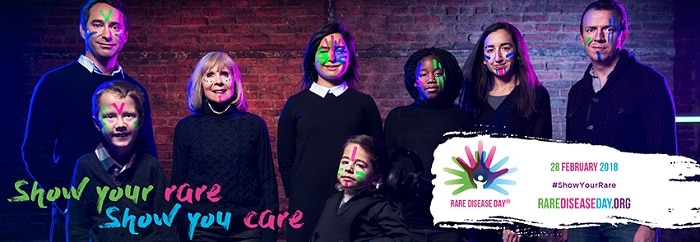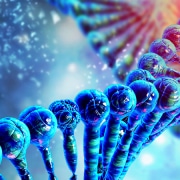Rare disease, genomics and the future
In the run-up to Rare Disease Day, we outline what constitutes ‘rare’ and how genomics is used in diagnosis and management
Rare Disease Day is on the 28th February and aims to boost the profile of these conditions among members of the public, policymakers, researchers and healthcare professionals.
Rare disease: what you need to know
A rare disease is defined as one that affects fewer than one in 2,000 people. Some conditions, such as cystic fibrosis and Huntington’s disease, are quite well known and more prevalent; cystic fibrosis, for example, affects more than 10,000 people in the UK. Other rare diseases, however, may affect just one or two people in the entire country.
According to EURORDIS – a European rare disease alliance – there are over 6,000 known rare diseases, and although individually rare, together they affect one-in-17 people, meaning that around 3.5 million people in the UK are directly affected, with many family members also feeling an impact.
Many rare diseases begin to show symptoms during childhood: 75% of affected individuals are children, and 30% of patients die before the age of five, according to EURORDIS.
In many cases rare diseases still go undiagnosed, with affected individuals and their families often facing what is known as the ‘diagnostic odyssey’ – a search for answers that can last years and involve many different tests and consultation with clinicians across multiple specialties. Even if a diagnosis is reached, there is often no treatment.
However, as our video of Lewis and his family shows, a long-awaited diagnosis can nonetheless bring some certainty and understanding where before there was none.
Genomic advances
Over 80% of rare diseases currently have a known genetic origin. This number is set to rise, however, as whole genome sequencing is now being employed to find new genetic links and provide diagnoses more quickly and accurately.
Rare diseases and cancers are the main focuses of the 100,000 Genomes Project. The recently released UK rare disease implementation strategy envisions that the project will continue after the initial 100,000 genomes are sequenced and analysed. It is hoped that the accumulation of genomic knowledge about even the rarest of diseases will be of benefit to patients. So far, about one-quarter of previously undiagnosed patients who have had their genomes sequenced as part of the project have received a rare disease diagnosis for the first time.
In addition to its diagnostic function, genetic testing can be helpful in directing the management of families. For example, determining the genetic origin of a condition makes it possible to assess the likelihood of a family member developing the same condition.
The role of primary care
“Primary care practitioners sometimes don’t realise how commonly genomics issues present within primary care,” says Dr Jude Hayward, a GP with a special interest in genetics and genomics, who discusses rare diseases in a video about genomics in primary care.
The fact that one-in-17 people are affected means that “a significant number of patients on a practice list will have a rare disease”, she points out.
Dr Hayward recommends that primary care professionals, including GPs, nurse practitioners and physician associates, ‘think genomics’ when:
- there is a family history of a disease, particularly if family members were affected at a young age;
- children display multiple health problems or developmental delay; or
- surprising test results have no other explanation.
The number of people eligible for testing is increasing all the time, so it is crucial that healthcare professionals stay alert to ‘red flags’ and consider a referral to clinical genetics.
–





 BBC/Minnow Films
BBC/Minnow Films 


